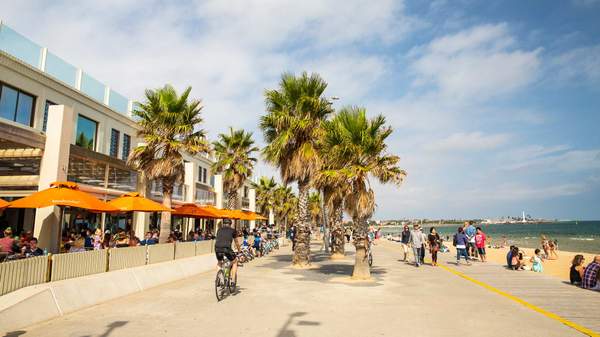Overview
Last month felt particular steamy and uncomfortable (even for Australian summer) and it was — January was Australia's hottest month ever recorded.
The Bureau of Meteorology this morning released its monthly climate summary, reporting that, for the first time ever in Australia, the mean temperature for a month exceeded 30 degrees. NSW, ACT, Victoria and the NT all had their hottest Januarys ever recorded, while other states had unusually hot weather and very little rain.
If you're currently sitting at your desk — after running through rain in Sydney, waking up to 14 degrees in Melbourne or commuting in low-20s in Brisbane — and thinking, it didn't seem that bad, here's a quick summary of some of the weather we endured last month.
The year kicked off with a country-wide heatwave, with the mercury hitting the 30s in every capital city and Canberra sweltering through four days of 40-degrees. By mid-January, the heatwave was causing record-breaking high temperatures across the country — including 48.9 in SA and high-40s across Victoria's North — with Sydney's west copping dangerously high levels of ozone gas. And, just last week, Melbourne survived its hottest day in ten years.
Here's how hot our country looked at one point:
Phew. We're sure you're happy to see the back of January.
According to the BOM's senior climatologist Dr Andrew Watkins, the unprecedented heat was due to a "a persistent high pressure system in the Tasman sea which was blocking any cold fronts and cooler air from impacting the south of the country." Dr Watkins also said in a statement that Australia looks to continue getting hotter, too. "The warming trend which has seen Australian temperatures increase by more than 1 degree in the last 100 years also contributed to the unusually warm conditions."
Unfortunately for our farmers, last month was also extremely dry. In NSW, where 100 percent of the state has been in drought, the northeast experienced one of the driest Januarys on record, while most of Victoria and Brisbane received less than 20 percent of their average January rainfall. Tasmania had its driest Jan on record and SA, which experienced some of the highest temperatures, also had very little-to-no rain — the Bureau's Adelaide city site recorded no rainfall for the month for the first time since 1957.
So far, it looks like February is going to be less spicy. But if you'd rather not risk it, it might be time to book a trip to the northern hemisphere.
Image: Visit Victoria.
